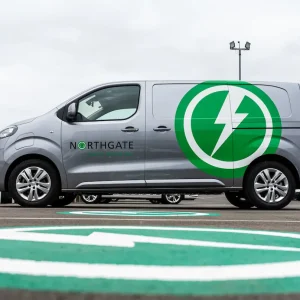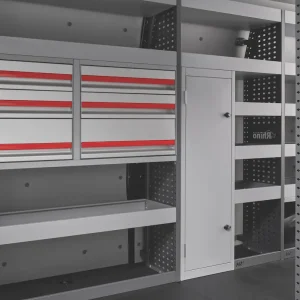In 2021/22, with new vehicle lead times stretching up to two years, many fleets extended their replacement cycles, causing a shortage of used vehicles in the marketplace. A perfect storm followed with those who would have bought new vehicles instead chasing the fast-dwindling stock of used, forcing prices sky high. But with new van supply easing and fleets starting to replace vehicles, there is cause for traders to be optimistic that prices may be softening.
Philip Nothard, chair, The Vehicle Remarketing Association (VRA) says: “Stock is starting to feed through to sales channels that were previously closed off and there are signs of a general freeing-up across the new and used markets.
“So, while progress may be gradual, there is a noticeable upward trend in de-fleet activity.”
Matthew Davock, director of Manheim Commercial Vehicles of Cox Automotive, concurs: “We’ve seen a marked shift in the volume of LCV stock passing through our de-fleet and auction sites since the beginning of this year. May was the fifth consecutive month
in which we surpassed our highest ever volume of LCVs handled.”
While supply of used vans into the remarketing arena is on the increase, the fact that fleet operators have been unwilling – or more likely unable – to renew their vehicles means that the previously commonly seen, four-years-old, 60,000-mile vans have, in many cases, been replaced by those a little less desirable.
Geoff Flood, Aston Barclay’s commercial vehicle sales manager, has seen a change: “Generally average age remains at 64 months but average mileages are anything between 94,000 and 100,000 miles plus.”
Tim Spencer, Shoreham Vehicle Auctions’ commercial vehicle sales manager agrees: “Generally, the LCVs are five-years-old plus with 100k plus miles on the clock. Anything that is 60,000 miles or less [is] rare.” Andy Picton, chief commercial vehicle editor at Glass’s, adds: “The increased number of older vehicles entering the wholesale arena are typically in poorer condition and with higher mileages.
“These vehicles are less appealing to the trade as more work is required to put them in a saleable condition. Stock volume in this age bracket is on the increase.”
Also citing how the age of the vehicles is reflected in the condition they are presented in is Van Monster’s managing director Gary Sullivan. “We are seeing used LCVs being offered for sale up to eight years of age with higher mileages and with more damage.”
Manheim’s Davock offers some statistics which underline the costs being incurred by the vendor in reduced returns at auction.
“Vehicle return damage is much more prevalent: 62% of the vehicles Manheim handled during May had more than £2,800 worth of return damage on average, a year-on-year increase of 26%.”
He continues: “Our survey of 100 LCV dealers in May saw 72% report that it was taking between 35–45 days to prepare stock, with the condition of de-fleeted LCVs combined with a general shortage of parts and body shop availability creating this time lag. All dealers reported that the cost of panel repairs was higher than pre-pandemic but alarmingly, 33% are reporting a 75% increase, and 44% a 100% cost increase.”
With the age, mileage and condition profile of the majority of vans being offered for resale being less desirable than in the past, used van traders are still chasing younger vehicles with lower mileage that require less time and expensive reconditioning. This is leading to a remarketing arena split in two halves, as Glass’ Picton explains.
“Late-year stock is still very much in short supply with values high as a result. With the supply of two-to-five year-old stock sparse, more buyers are considering vehicles in the five-to-10 year-old age bracket, where availability is more stable. However, there is a lot of samey, repetitive stock that is now struggling as a result of being older, with higher mileages and having been harder worked.”
Julian Pullen, senior editor commercial vehicles and motorcycles at cap hpi has observed a trend across the entire market: “We are seeing values consistently soften across the board now, whereas this was patchy up until a month ago. Higher mileage vehicles are being adversely affected, and the generally ‘acceptable’ mileage cut off seems to be reducing.”
The used van trader could previously rely on late, low-mileage de-fleeted vans from rental companies, but Shoreham’s Spencer has seen a change in strategy that means that the numbers offered for sale, whilst having been lower during the new van supply shortage may remain so for some time.
“Rental companies continue to work on different replacement cycles to the age old 12-18 months that we were once used to. Some rental companies are keeping their replacement cycles at between three and five years, which will mean the volume of lower age and mileage vehicles hitting the market will remain quite scarce.”
The VRA’s Nothard suggests that the weakening of values currently being seen may be in part due to more traditional reasons. “While there are indications of softening wholesale values for cars and LCVs overall, it is important to consider the context in which these values were achieved.
“As the sector began to reopen and faced supply shortages in the new vehicle market, the values achieved were notably higher.”
Looking at recent price movements, he adds: “Today, there is a current softening, but it can largely be attributed to standard seasonal depreciation as supply increases and more returns become available. It is crucial to keep in mind that these fluctuations are expected and reflect normal market dynamics rather than an underlying trend.”
Manheim’s Davock is pragmatic about the current market situation.
“We must remember that a drop in values has been an inevitability. The market was always going to settle once new vehicle production was back on stream and used volumes returned to nearer normal levels. The drop is from a false high and must be viewed in that way.”
An additional factor responsible for late-model values remaining high is the steep increase in the price customers are being asked to pay for new vans. While someone looking to buy a 12–18 month-old van will be looking to make a saving from new, this new pricing strategy from manufacturers is having a negative effect.
Van Monster’s Sullivan says: “New transaction prices have gone up substantially, which has definitely helped maintain used values at a higher level.”
Glass’s Picton agrees: “List prices of new vans have continued to rise throughout the pandemic, mainly due to a shortage of parts and raw materials. This has definitely helped the used market remain robust and values strong over the last two-three years.”
Cap hpi’s Pullen agrees this is a factor but argues it has already been reflected in the value lifts seen during the pandemic “not crashing back to pre-pandemic levels”.
“Although we have largely returned to a pre-pandemic depreciation pattern, this is still at higher values than four or five years ago,” he concludes.
Supported by:






